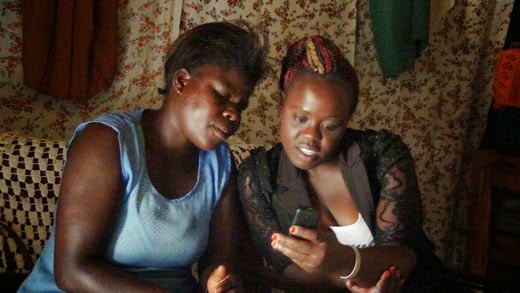M-Pesa is famously ubiquitous in Kenya, with more than half the adult population using it or some other form of mobile money. M-Pesa agents, who take users’ deposits and provide cash-outs, operate in most towns and even small villages. The breadth of the network has certainly made our work delivering cash transfers, even in rural, hard-to-reach areas without a banking infrastructure, easier.
But most of our recipients, who live in some of the poorest and most remote communities, are among the minority of adults who have never used M-Pesa before. In fact, many have never owned a mobile phone before purchasing one through our program. Our field officers are responsible for ensuring that recipients receive their transfers – and, importantly, are armed with the knowledge of how to access their money securely and protect themselves from fraud and theft.
Field officers deliver this education over the course of several interactions with each recipient. First, a registration team field officer meets with an eligible recipient in his or her home, provides a phone and SIM card (if he or she doesn’t have one already), and explains how to register with M-Pesa and what to expect when the transfer is sent. For those who are learning how to use a mobile phone for the first time, field officers often have to teach the basics, like how to charge the phone – for example, at a charging station run by a local entrepreneur – and receive and compose an SMS message.
Once those recipients have been enrolled, the backcheck team provides a more thorough tutorial that covers topics ranging from how to withdraw money from an agent to checking the account balance to PIN safety. For those of us who grew up with ATMs and online banking, PIN safety is second nature; for most recipients, it’s an entirely new concept. In these cases a field officer explains what a PIN is and how to keep it secure – often emphasizing things not to do, like using a birthday or other easy-to-guess number, giving it to the M-Pesa agent and keeping a written copy near the phone. They use didactic techniques like call-and-response to confirm that recipients have fully comprehended the information and are ready to receive the transfer safely and securely. They also instruct recipients on how to contact GiveDirectly via our hotline number – manned by four follow-up team members – to report any issues or questions.
Technology like M-Pesa provides the rails on which to send money directly to the poor, but without our field officers’ efforts to teach recipients how to interact with the technology securely, we wouldn’t be able to uphold our commitment to providing a great user experience and to delivering transfers securely.


